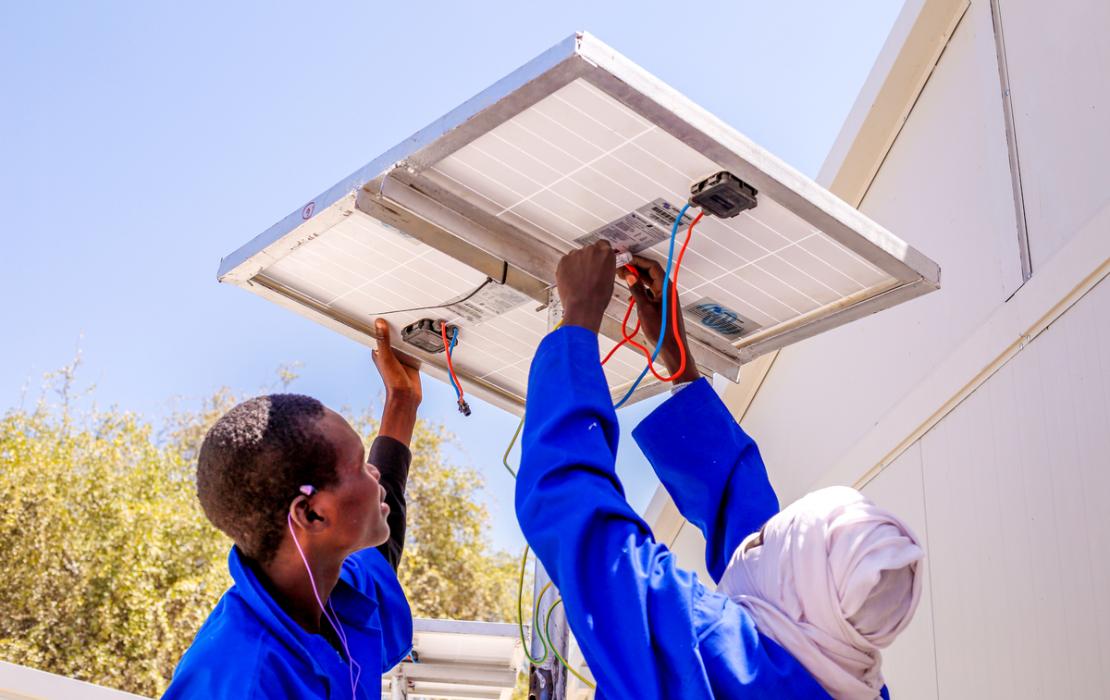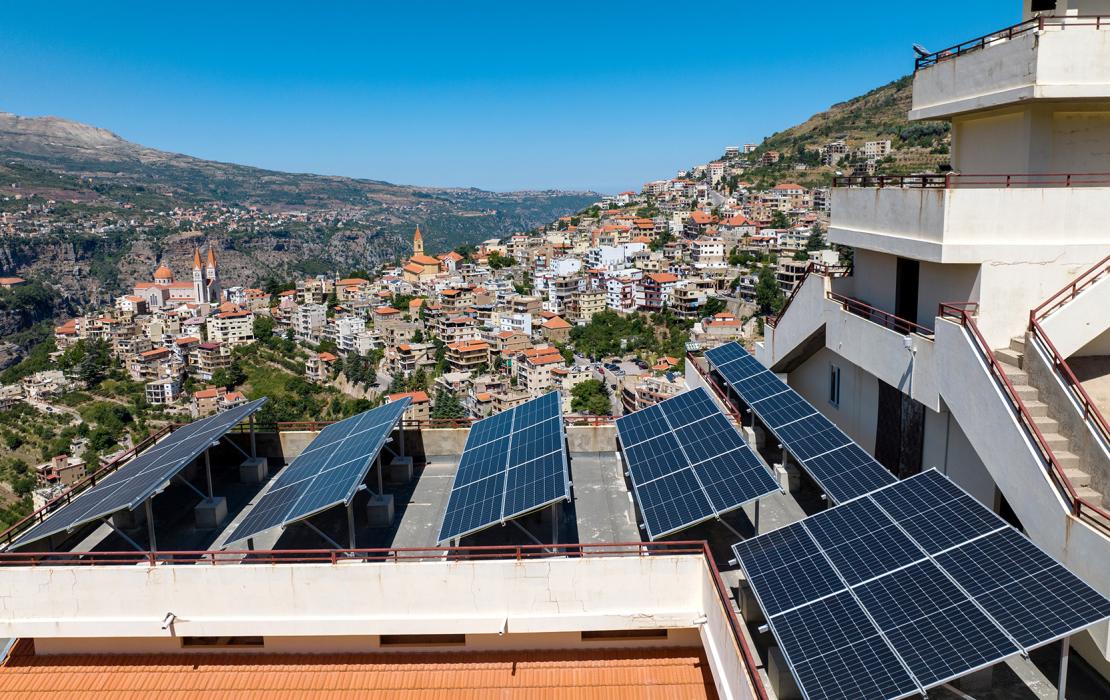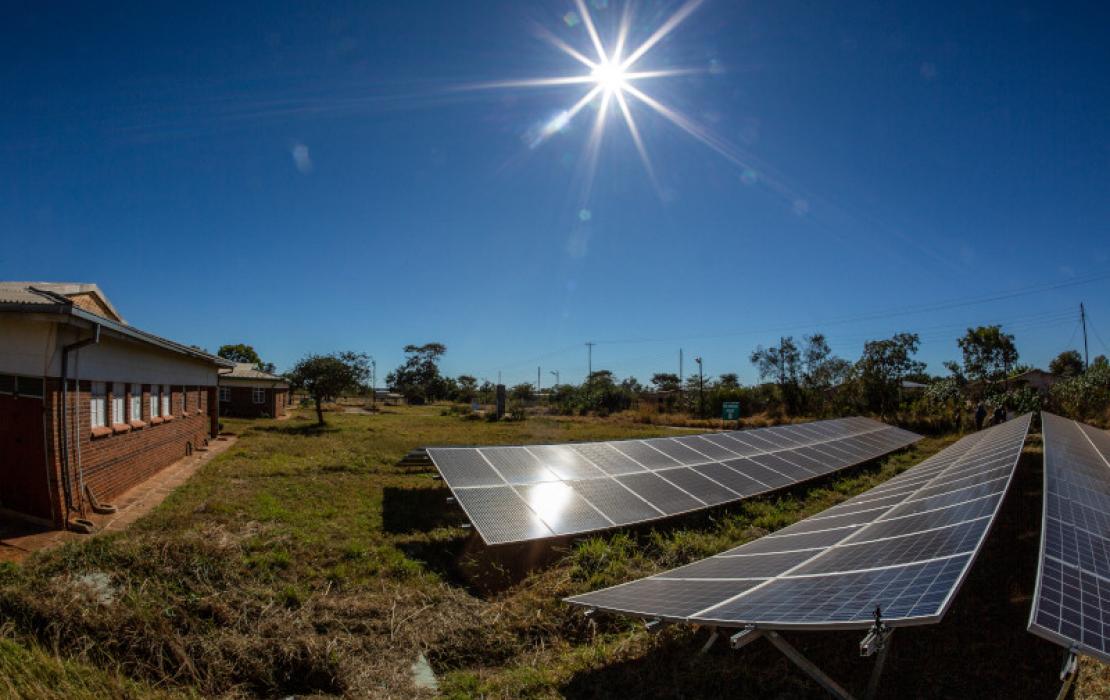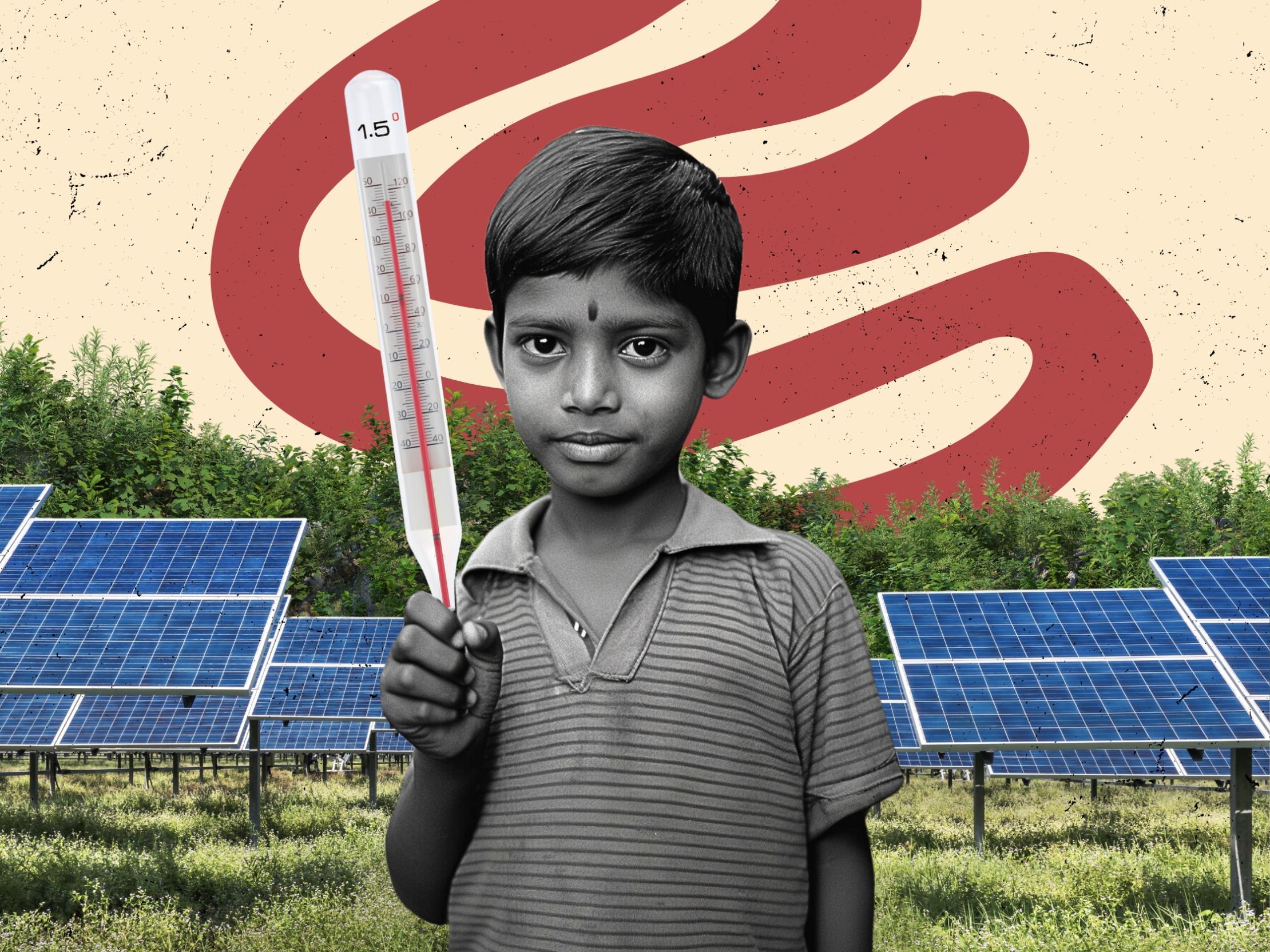
Summary
- Climate change mitigation involves actions to reduce or prevent greenhouse gas emissions from human activities.
- Mitigation efforts include transitioning to renewable energy sources, enhancing energy efficiency, adopting regenerative agricultural practices and protecting and restoring forests and critical ecosystems.
- Effective mitigation requires a whole-of-society approach and structural transformations to reduce emissions and limit global warming to 1.5°C above pre-industrial levels.
- International cooperation, for example through the Paris Agreement, is crucial in guiding and achieving global and national mitigation goals.
- Mitigation efforts face challenges such as the world's deep-rooted dependency on fossil fuels, the increased demand for new mineral resources and the difficulties in revamping our food systems.
- These challenges also offer opportunities to improve resilience and contribute to sustainable development.
What is climate change mitigation?
Climate change mitigation refers to any action taken by governments, businesses or people to reduce or prevent greenhouse gases, or to enhance carbon sinks that remove them from the atmosphere. These gases trap heat from the sun in our planet’s atmosphere, keeping it warm.
Since the industrial era began, human activities have led to the release of dangerous levels of greenhouse gases, causing global warming and climate change. However, despite unequivocal research about the impact of our activities on the planet’s climate and growing awareness of the severe danger climate change poses to our societies, greenhouse gas emissions keep rising. If we can slow down the rise in greenhouse gases, we can slow down the pace of climate change and avoid its worst consequences.
Reducing greenhouse gases can be achieved by:
- Shifting away from fossil fuels: Fossil fuels are the biggest source of greenhouse gases, so transitioning to modern renewable energy sources like solar, wind and geothermal power, and advancing sustainable modes of transportation, is crucial.
- Improving energy efficiency: Using less energy overall – in buildings, industries, public and private spaces, energy generation and transmission, and transportation – helps reduce emissions. This can be achieved by using thermal comfort standards, better insulation and energy efficient appliances, and by improving building design, energy transmission systems and vehicles.
- Changing agricultural practices: Certain farming methods release high amounts of methane and nitrous oxide, which are potent greenhouse gases. Regenerative agricultural practices – including enhancing soil health, reducing livestock-related emissions, direct seeding techniques and using cover crops – support mitigation, improve resilience and decrease the cost burden on farmers.
- The sustainable management and conservation of forests: Forests act as carbon sinks, absorbing carbon dioxide and reducing the overall concentration of greenhouse gases in the atmosphere. Measures to reduce deforestation and forest degradation are key for climate mitigation and generate multiple additional benefits such as biodiversity conservation and improved water cycles.
- Restoring and conserving critical ecosystems: In addition to forests, ecosystems such as wetlands, peatlands, and grasslands, as well as coastal biomes such as mangrove forests, also contribute significantly to carbon sequestration, while supporting biodiversity and enhancing climate resilience.
- Creating a supportive environment: Investments, policies and regulations that encourage emission reductions, such as incentives, carbon pricing and limits on emissions from key sectors are crucial to driving climate change mitigation.
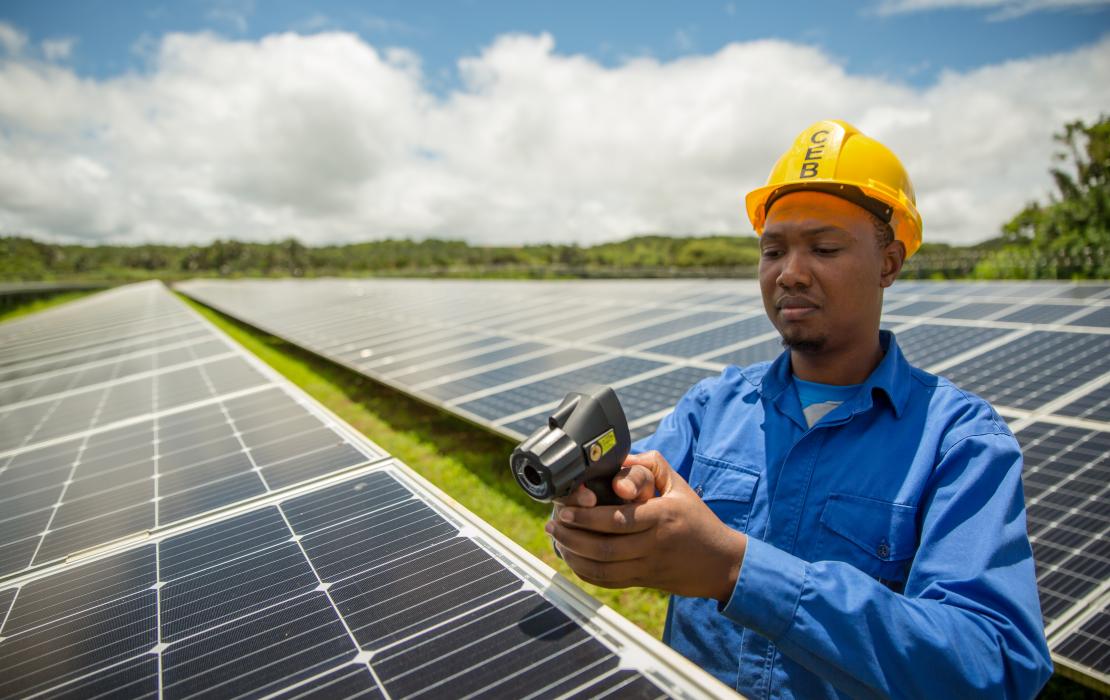
Photo: Stephane Bellerose/UNDP Mauritius
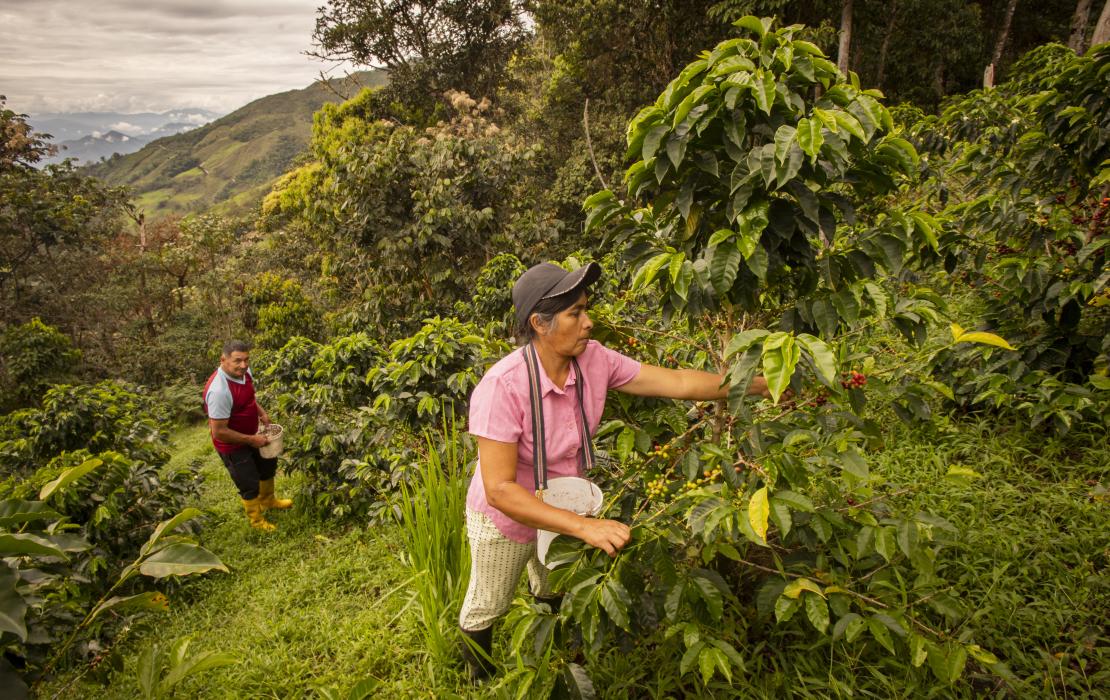
Photo: La Incre and Lizeth Jurado/PROAmazonia
What is the 1.5°C goal and why do we need to stick to it?
In 2015, 196 Parties to the UN Climate Convention in Paris adopted the Paris Agreement, a landmark international treaty, aimed at curbing global warming and addressing the effects of climate change. Its core ambition is to cap the rise in global average temperatures to well below 2°C above levels observed prior to the industrial era, while pursuing efforts to limit the increase to 1.5°C.
The 1.5°C goal is extremely important, especially for vulnerable communities already experiencing severe climate change impacts. Limiting warming below 1.5°C will translate into less extreme weather events and sea level rise, less stress on food production and water access, less biodiversity and ecosystem loss, and a lower chance of irreversible climate consequences.
To limit global warming to the critical threshold of 1.5°C, it is imperative for the world to undertake significant mitigation action. This requires a reduction in greenhouse gas emissions by 45 percent before 2030 and achieving net-zero emissions by mid-century.
What are the policy instruments that countries can use to drive mitigation?
Everyone has a role to play in climate change mitigation, from individuals adopting sustainable habits and advocating for change to governments implementing regulations, providing incentives and facilitating investments. The private sector, particularly those businesses and companies responsible for causing high emissions, should take a leading role in innovating, funding and driving climate change mitigation solutions.
International collaboration and technology transfer is also crucial given the global nature and size of the challenge. As the main platform for international cooperation on climate action, the Paris Agreement has set forth a series of responsibilities and policy tools for its signatories. One of the primary instruments for achieving the goals of the treaty is Nationally Determined Contributions (NDCs). These are the national climate pledges that each Party is required to develop and update every five years. NDCs articulate how each country will contribute to reducing greenhouse gas emissions and enhance climate resilience.
While NDCs include short- to medium-term targets, long-term low emission development strategies (LT-LEDS) are policy tools under the Paris Agreement through which countries must show how they plan to achieve carbon neutrality by mid-century. These strategies define a long-term vision that gives coherence and direction to shorter-term national climate targets.

Photo: Mucyo Serge/UNDP Rwanda

Photo: William Seal/UNDP Sudan
At the same time, the call for climate change mitigation has evolved into a call for reparative action, where high-income countries are urged to rectify past and ongoing contributions to the climate crisis. This approach reflects the UN Framework Convention on Climate Change (UNFCCC) which advocates for climate justice, recognizing the unequal historical responsibility for the climate crisis, emphasizing that wealthier countries, having profited from high-emission activities, bear a greater obligation to lead in mitigating these impacts. This includes not only reducing their own emissions, but also supporting vulnerable countries in their transition to low-emission development pathways.
Another critical aspect is ensuring a just transition for workers and communities that depend on the fossil fuel industry and its many connected industries. This process must prioritize social equity and create alternative employment opportunities as part of the shift towards renewable energy and more sustainable practices.
For emerging economies, innovation and advancements in technology have now demonstrated that robust economic growth can be achieved with clean, sustainable energy sources. By integrating renewable energy technologies such as solar, wind and geothermal power into their growth strategies, these economies can reduce their emissions, enhance energy security and create new economic opportunities and jobs. This shift not only contributes to global mitigation efforts but also sets a precedent for sustainable development.
What are some of the challenges slowing down climate change mitigation efforts?
Mitigating climate change is fraught with complexities, including the global economy's deep-rooted dependency on fossil fuels and the accompanying challenge of eliminating fossil fuel subsidies. This reliance – and the vested interests that have a stake in maintaining it – presents a significant barrier to transitioning to sustainable energy sources.
The shift towards decarbonization and renewable energy is driving increased demand for critical minerals such as copper, lithium, nickel, cobalt, and rare earth metals. Since new mining projects can take up to 15 years to yield output, mineral supply chains could become a bottleneck for decarbonization efforts. In addition, these minerals are predominantly found in a few, mostly low-income countries, which could heighten supply chain vulnerabilities and geopolitical tensions.
Furthermore, due to the significant demand for these minerals and the urgency of the energy transition, the scaled-up investment in the sector has the potential to exacerbate environmental degradation, economic and governance risks, and social inequalities, affecting the rights of Indigenous Peoples, local communities, and workers. Addressing these concerns necessitates implementing social and environmental safeguards, embracing circular economy principles, and establishing and enforcing responsible policies and regulations.
Agriculture is currently the largest driver of deforestation worldwide. A transformation in our food systems to reverse the impact that agriculture has on forests and biodiversity is undoubtedly a complex challenge. But it is also an important opportunity. The latest IPCC report highlights that adaptation and mitigation options related to land, water and food offer the greatest potential in responding to the climate crisis. Shifting to regenerative agricultural practices will not only ensure a healthy, fair and stable food supply for the world’s population, but also help to significantly reduce greenhouse gas emissions.
Photo: UNDP India
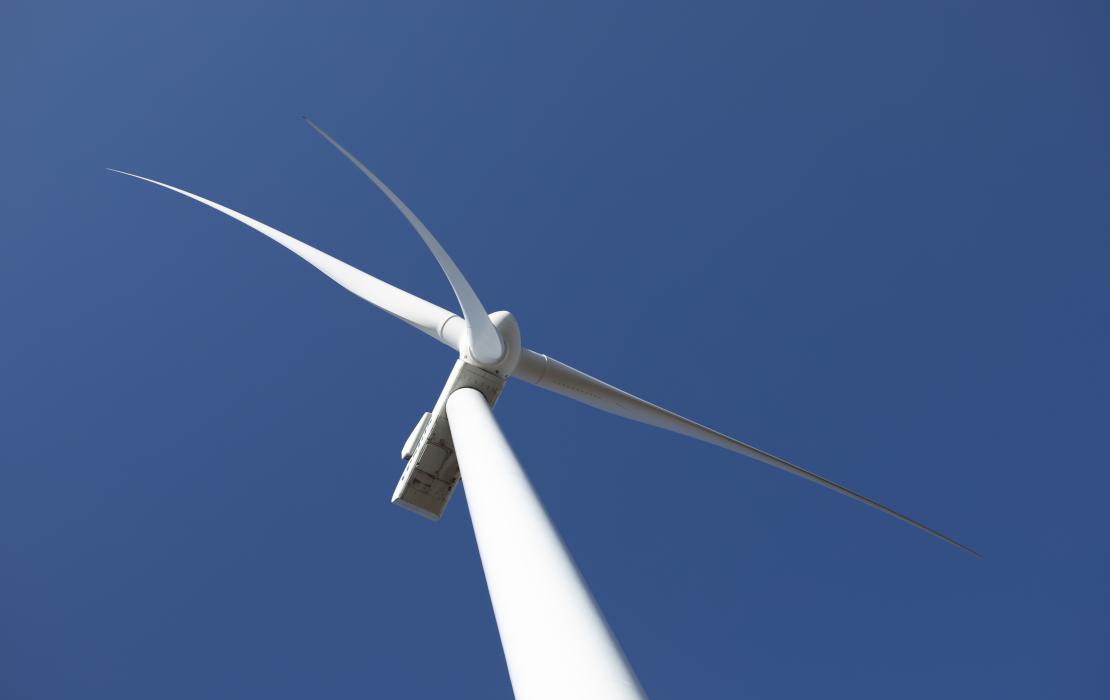
Photo: Nino Zedginidze/UNDP Georgia
What are some examples of climate change mitigation?
In Mauritius, UNDP, with funding from the Green Climate Fund, has supported the government to install battery energy storage capacity that has enabled 50 MW of intermittent renewable energy to be connected to the grid, helping to avoid 81,000 tonnes of carbon dioxide annually.
In Indonesia, UNDP has been working with the government for over a decade to support sustainable palm oil production. In 2019, the country adopted a National Action Plan on Sustainable Palm Oil, which was collaboratively developed by government, industry and civil society representatives. The plan increased the adoption of practices to minimize the adverse social and environmental effects of palm oil production and to protect forests. Since 2015, 37 million tonnes of direct greenhouse gas emissions have been avoided and 824,000 hectares of land with high conservation value have been protected.
In Moldova and Paraguay, UNDP has helped set up Green City Labs that are helping build more sustainable cities. This is achieved by implementing urban land use and mobility planning, prioritizing energy efficiency in residential buildings, introducing low-carbon public transport, implementing resource-efficient waste management, and switching to renewable energy sources.
UNDP has supported the governments of Brazil, Costa Rica, Ecuador and Indonesia to implement results-based payments through the REDD+ (Reducing emissions from deforestation and forest degradation in developing countries) framework. These include payments for environmental services and community forest management programmes that channel international climate finance resources to local actors on the ground, specifically forest communities and Indigenous Peoples.
UNDP is also supporting small island developing states like the Comoros to invest in renewable energy and sustainable infrastructure. Through the Africa Minigrids Program, solar minigrids will be installed in two priority communities, Grand Comore and Moheli, providing energy access through distributed renewable energy solutions to those hardest to reach.
And in South Africa, a UNDP initative to boost energy efficiency awareness among the general population and improve labelling standards has taken over commercial shopping malls.
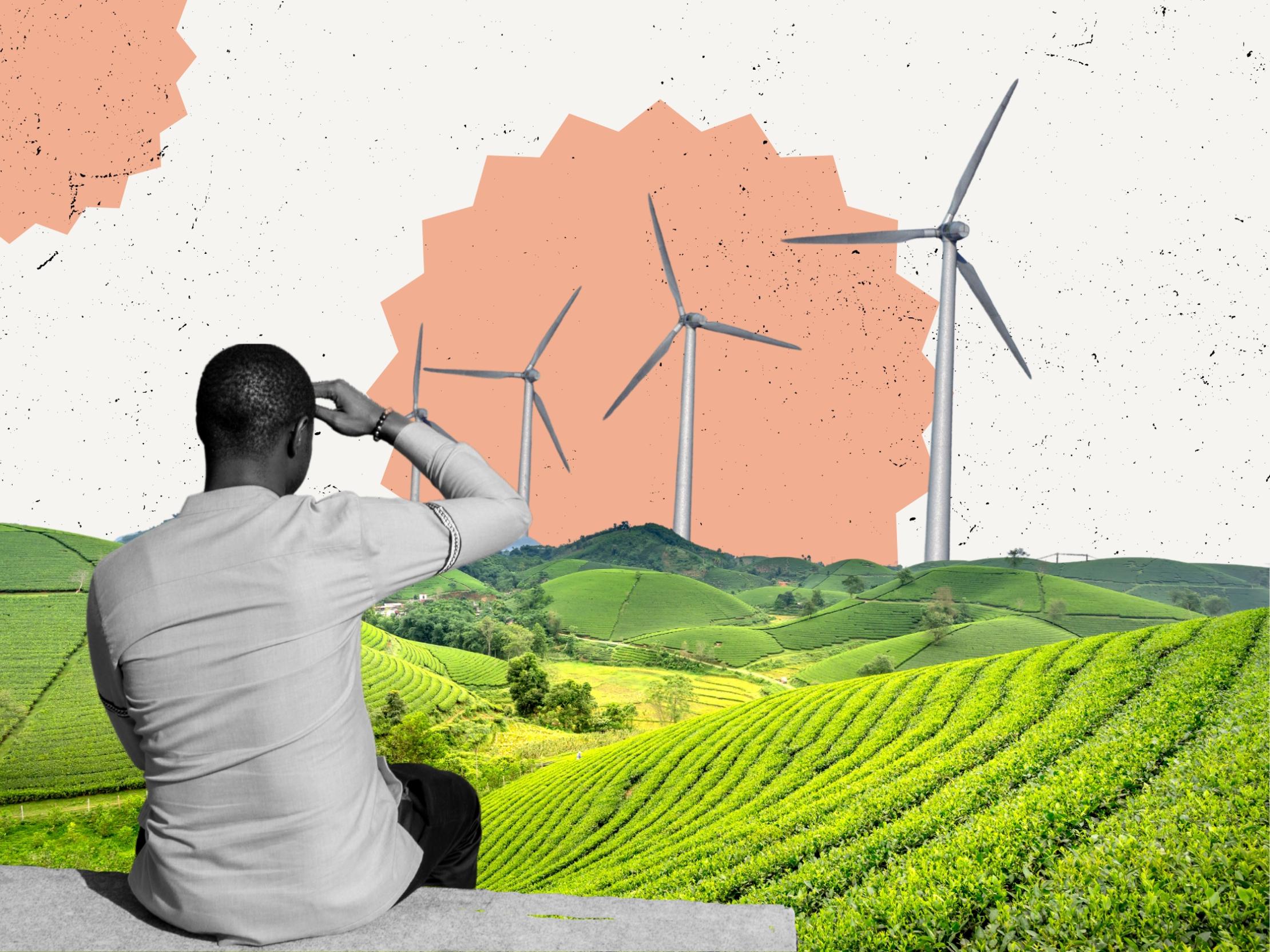
What is UNDP’s role in supporting climate change mitigation?
UNDP aims to assist countries with their climate change mitigation efforts, guiding them towards sustainable, low-carbon and climate-resilient development. This support is in line with achieving the Sustainable Development Goals (SDGs), particularly those related to affordable and clean energy (SDG7), sustainable cities and communities (SDG11), and climate action (SDG13). Specifically, UNDP’s offer of support includes developing and improving legislation and policy, standards and regulations, capacity building, knowledge dissemination, and financial mobilization for countries to pilot and scale-up mitigation solutions such as renewable energy projects, energy efficiency initiatives and sustainable land-use practices.
With financial support from the Global Environment Facility and the Green Climate Fund, UNDP has an active portfolio of 94 climate change mitigation projects in 69 countries. These initiatives are not only aimed at reducing greenhouse gas emissions, but also at contributing to sustainable and resilient development pathways.

